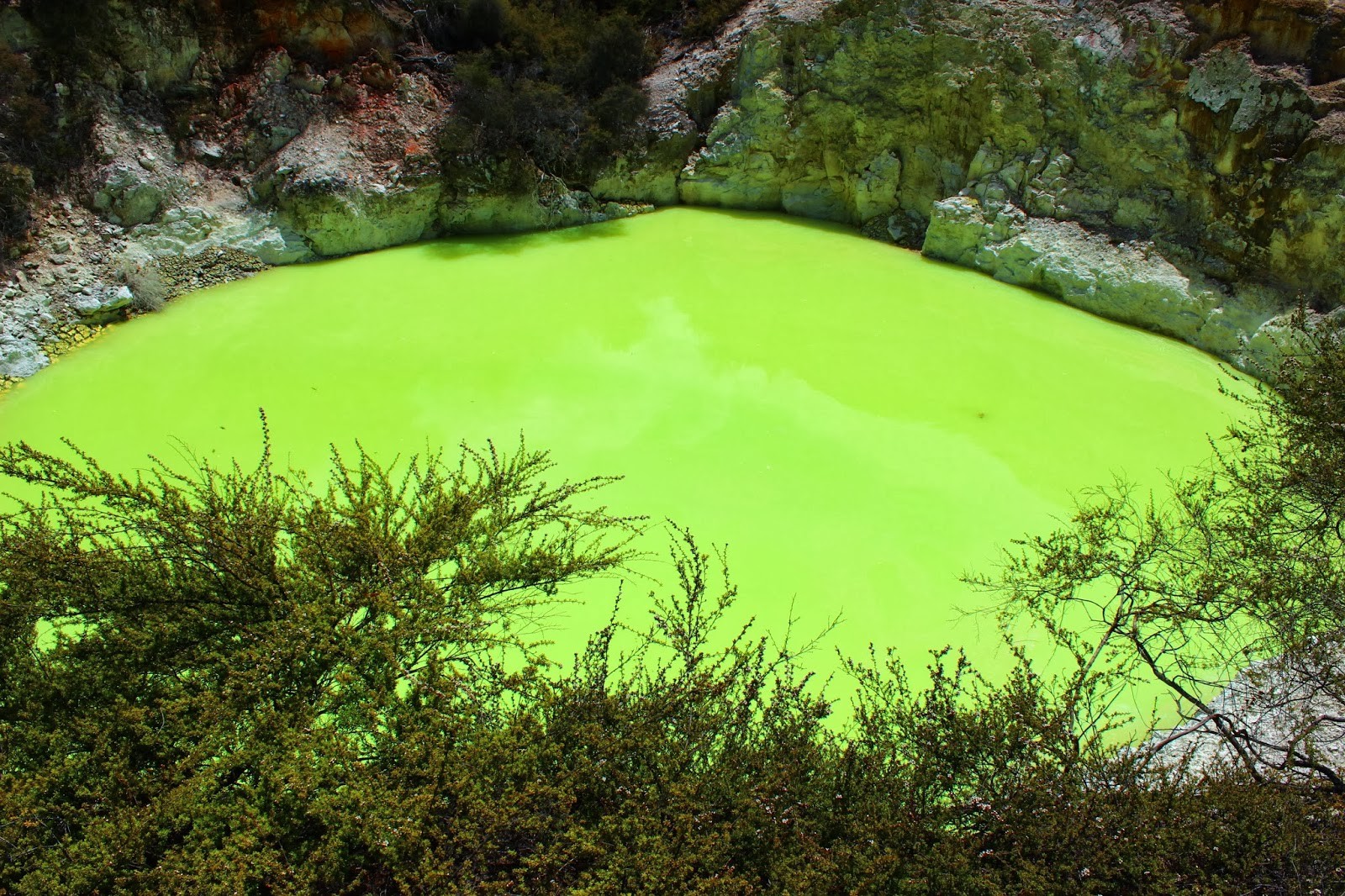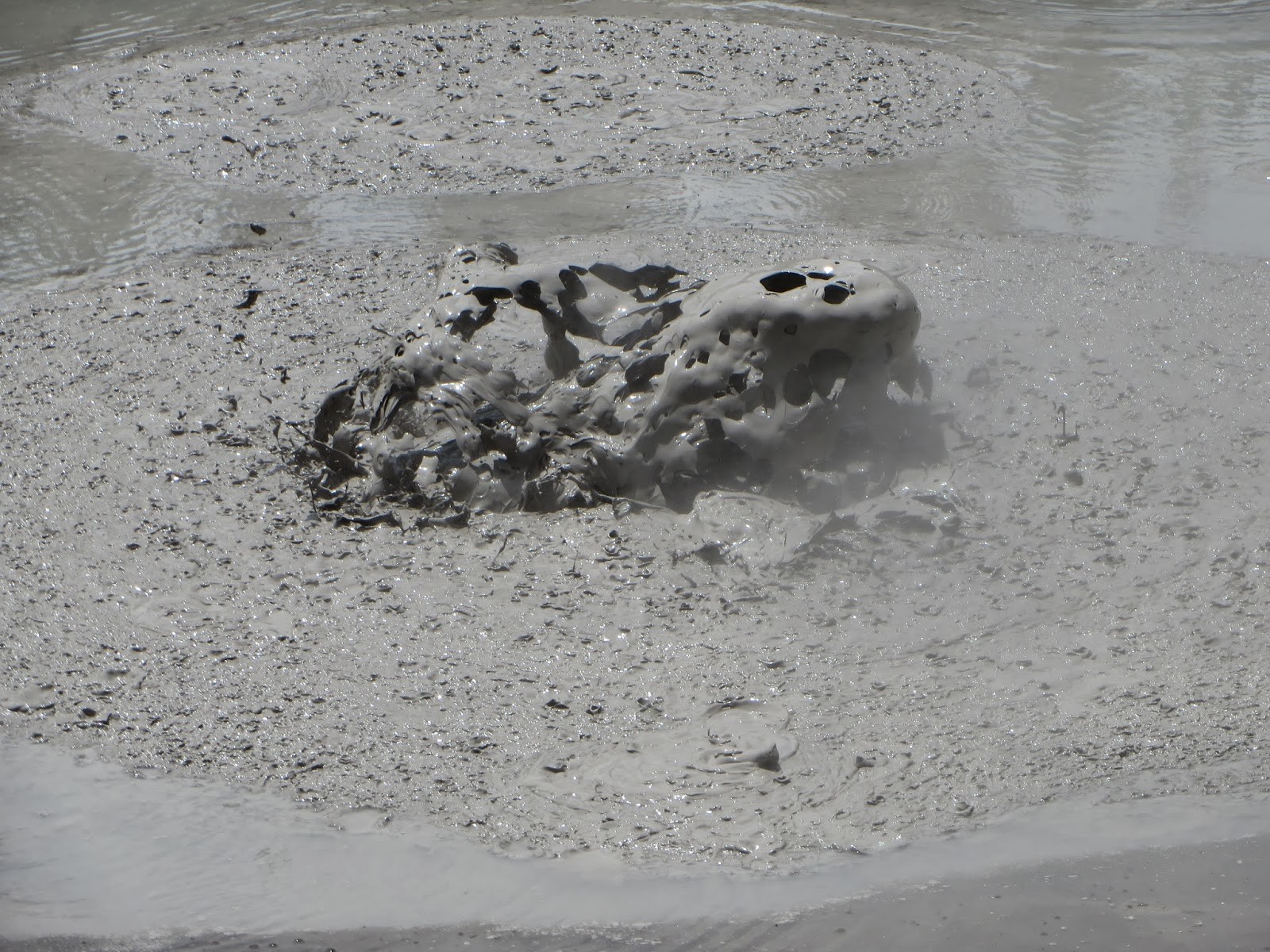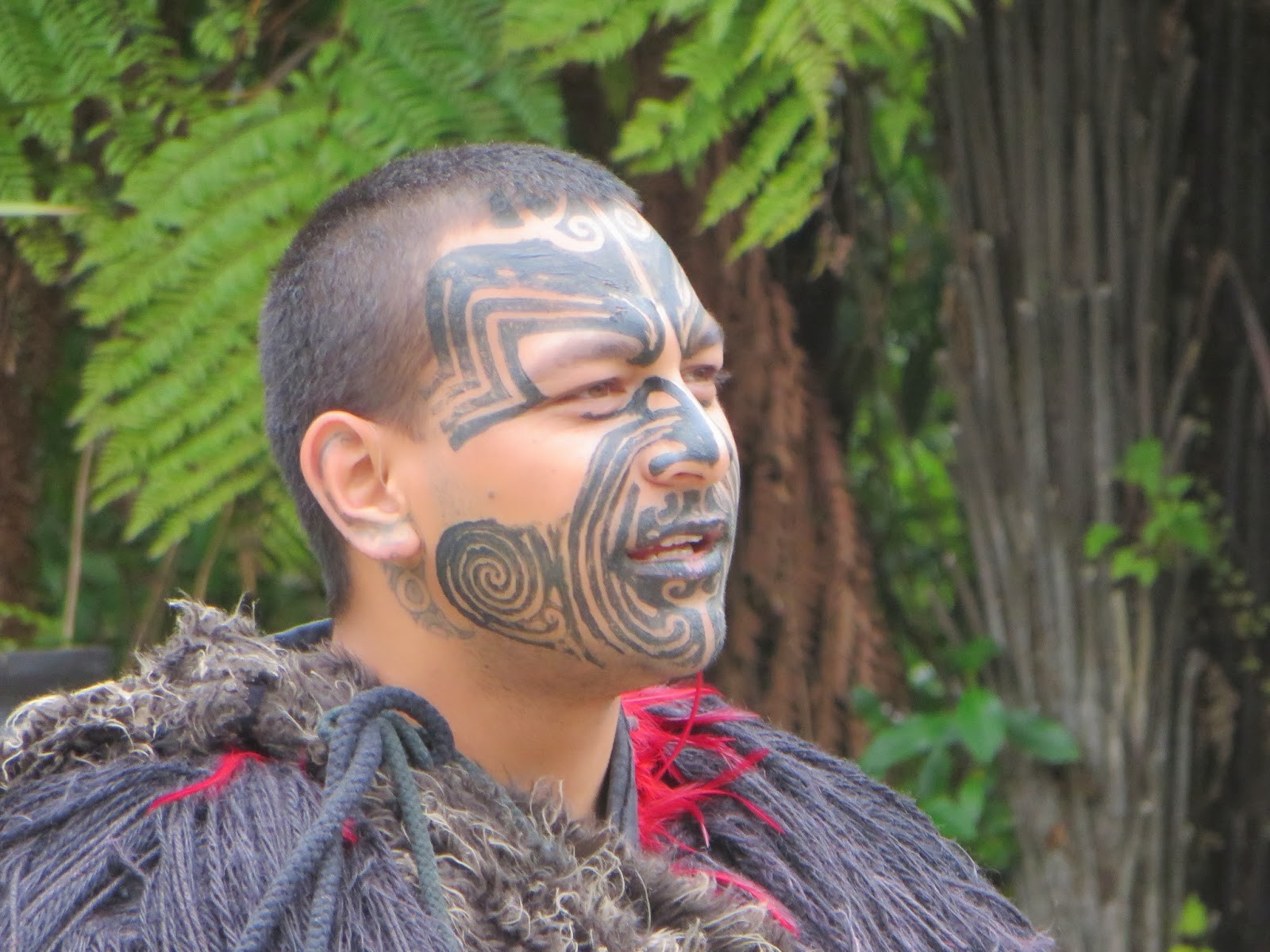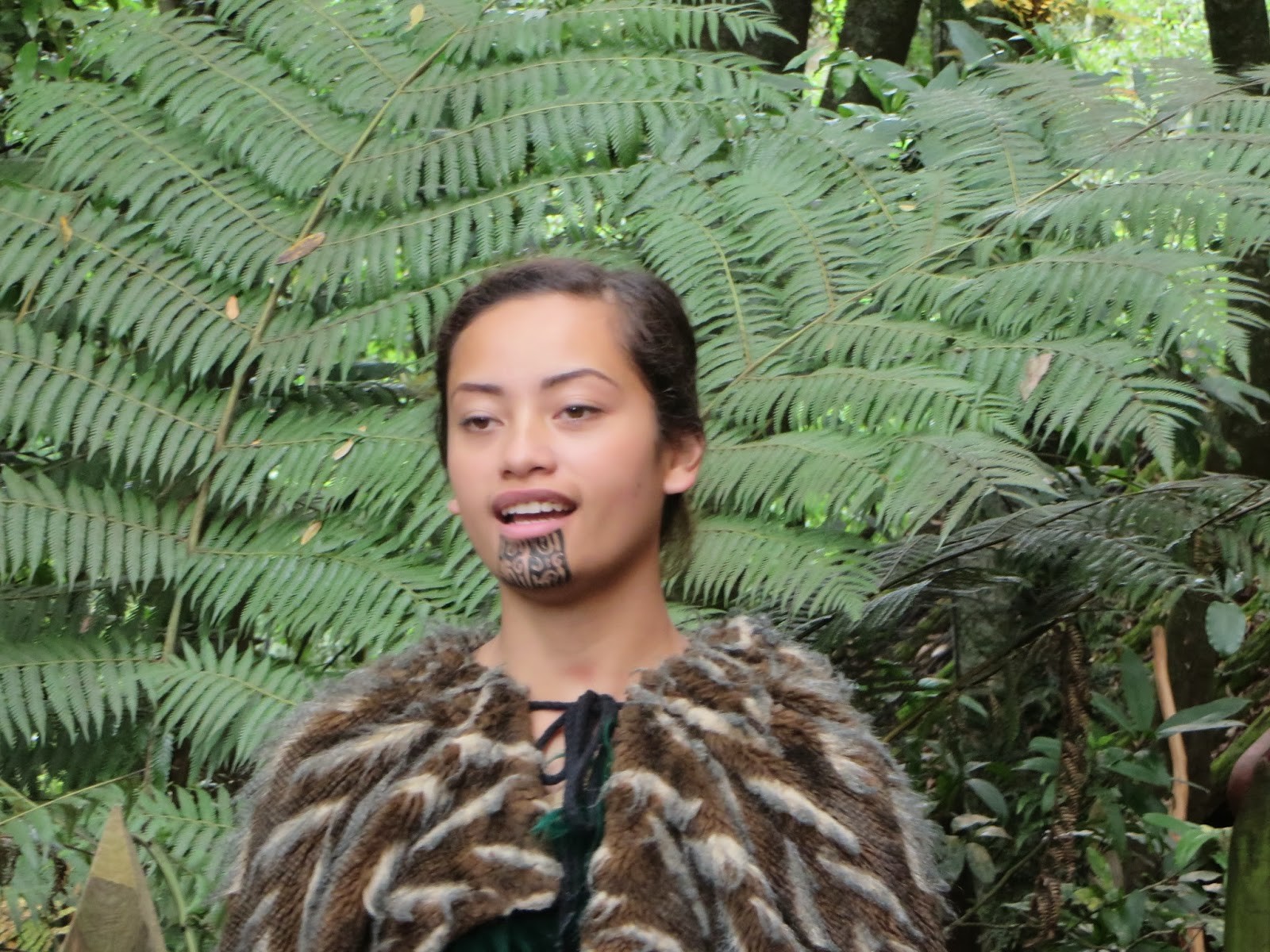Rotorua: thermal activity and Maori culture
I was looking forward to going to Rotorua for a long time, because this ist he Maori centre and they were one of the reasons, why I came to New Zealand. I was always interested in the native tribes of Australia, America and mainly New Zealand. When we arrived, the weather was so bad, that we didn’t do anything else than going shopping and in the evening to the cinema. It was actually the first time that we went to the cinema since we left Germany. We were always so busy and never even thought about it. But as now we were bored and I wanted to see the Hunger Games – Catching Fire anyway, we went to see it to escape the bad weather.
The next day, the sun was shining and it got hot again. So, we took the chance and went to the Wai-O-Tapu Thermal Wonderland. There, we saw the famous Lady Knox Geysir, which is actually the fifth highest geyser in the world. The highest was the now inactive Geysir in Iceland, the second highest is somewhere in America – honestly I forgot where -, the third highest again in Iceland: Strokkur and this one is with up to 20 metres the fifth highest. This one here, was found by accident by some workers that went for washing their clothes in the water. When adding soap, the geyser reacts and erupts. The people back then were very surprised, but nowadays this effect is used to make erupt Lady Knox every morning at 10:15 o’clock with a duration of 15 minutes. It was pretty impressive, but now that I have seen the naturally erupting geysers in Iceland, I might change my mind about that. Afterwards we walked over the Wonderland and looked at all the lake in different colours, caves, crater and brooding mud pools. The lakes can have colours from a strange green over orange to a bright yellow, depending on the minerals and other things. The Champagne Pool is the most famous, it is immensely deep in the middle and of an intensive turquoise, at the edges it has a bright orange. It is called champagne pool, because of the bubbles that come up, which makes it look like champagne. I actually liked the mud pools very much, they are so relaxing: slowly brooding and then sometimes a slow plop.




In the afternoon, we had a tour to the Tamaki Maori Village booked and I was so excited about going there. It is not that I never saw one of them, they live normally in the society and even have the same rights as New Zealand people and get social aids. They are pretty much more advanced in integrating them, than the Australians do it with the aborigines. New Zealand is officially bilingual and Maori is taught at school. I already knew a lot about their history from the museums, films and my big interest. The Maori were the first settlers in New Zealand and called it Aotearoa, which means country of the long, white cloud as there is always a cloud over New Zealand. Originally, they come from their home country Hawaiki, which might be the islands of Tahiti. The tour started with the official greeting ceremony of the Maori, who were also clothed traditionally. One of our group had to come forward and present a gift, the Maori would do their Haka to impress us and then do the “nose kiss” with our chief, which means rubbing the noses against each other. This is the sign for respect and the allowance for our group to enter the village. Then, we separated into different groups and were shown around the village. They showed us their traditional houses, made of wood and really small, the traditional dance for women: poi, some sporty activities for the warriors to keep them fit, games, constructions and of course, the Haka. The Haka is the war dance, where you go in the knees, stand wide legged, clap on your lap, make big eyes, put out your tongue and then make strange noises and faces. This is to impress and intimidate your enemies. The New Zealand football team is known for doing it before each game and they are surprisingly successful. Years ago, it was really intimidating and it is still now, but now the others teams are prepared and know this tradition. Even though, it is also good for the team spirit and for concentration. We also took part in all the games, sports and dances. Interesting are also their tattoos. These are actually not tattooed as ours nowadays, but they are still patted with a mettallic point. The tattoos always stand for family, status and aquisitions and are mostly in the face and on the arms. The Maori are not discriminated for that in work life, as it is part of their culture. A fully tattoed Maori can without any problems work in a bank, for example. After that, we watched them take our Hangi out of a hole in the earth. Hangi is the traditional Maori meal. They dig a hole in the ground, heat up stones in a fire and then put them in the hole. On that, they put the meat, fish, vegetables and puddings, then close it and let it cook for hours. While some of them prepared the food, we were invited into the Wharenui, which is the assembly house. There, they told and acted old stories, performed dances and songs and one last time the Haka. Finally, we got our delicious food: loads of lamb, chicken, fish, mussels, potatoes, Kumara (sweet potato), carrrots, salad, bread, sauces and something, what we don’t know what it was – it was tasty anyhow. Also the desert was amazingly good: steam pudding. For me the whole day was one of my highlights, I was so happy of having had this perfect and unforgettable experience.




The next day, we went for a walk in the Redwood forest, even though it was raining! We don’t let the weather tell us what to do and what not! I very much like the huge trees with the red colour, it had a very calming effect. The region of Rotorua in general, I don’t like so much, because you can smell the sulphur every time and everywhere, I already felt sick of it, because it is not just a light smell, but a very intensive one. I was already wondering, why the houses in this region were so big and if maybe it was cheaper around here. I guess, I found the reason why.


Photo gallery
Content available in other languages
Want to have your own Erasmus blog?
If you are experiencing living abroad, you're an avid traveller or want to promote the city where you live... create your own blog and share your adventures!
I want to create my Erasmus blog! →













Comments (0 comments)